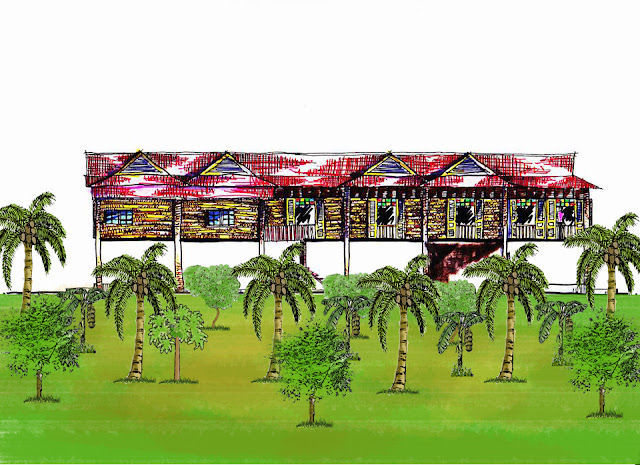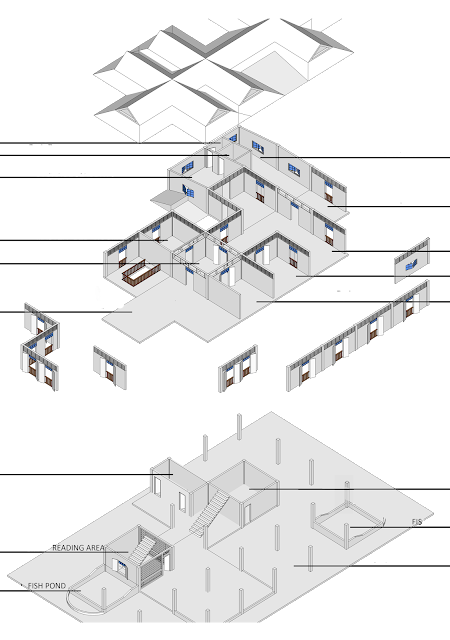
Hari Raya Haji, Eid al-Adha or feast of festival is celebrated on the 10th day of the last month of the Islamic Calendar. It honours the willingness of prophet Ibrahim to sacrifice his first son (Ismail) as an act and faith to Allah command.
According to the story in Quran around 4000 years ago in the valley of Mecca (present Saudi Arabia) was an uninhabited place, after years of worship, Ibrahim and Hajra, his wife were blessed with a son. In order to test the devotion and faith of Ibrahim, God decided to command Ibrahim to sacrifice his one and only son. As Ibrahim was about to strike his son, Allah stopped him and revealed that it was a test and a ram was to be sacrifice instead.
This ultimate act of sacrifice by the Muslim commemorate is done yearly to remember the sacrificial intentions of Abraham towards Allah. Cow and sheep is use to sacrifice in a mosque during this festival and it usually cost around RM 800-1200 depending on the cow size. The most important is not the price because it is the meaning behind the sacrifice and the ritual itself. Animals are killed according to the proper religions rites and meat is then distributed to family, neighbors and most important, the less fortunate in the community.
During the week of the hajj, pilgrims gather in Mecca to perform a series of ritual such as walking counter-clockwise 7 times around the Ka’bah (cube-shaped structure covered in black cloth which serves as the Muslim prayer direction), kissin the black stone in the corner of the Ka’bah, drinking from the Zamzam well and throwing stones as a symbolic act of stoning the devil. Upon completion of the pilgrimage, the men will earn the title “haji” and the women “hajjah”.
In the kampung during Hari Raya Haji, the men perform prayers in the mosque. Sermons are read out in the mosque. Afterwards, the volunteers participate in “korban”, or sacrificial of sheeps and cows hosted by mosques across the country. The meat will then be distributed through the Muslim community, particularly to the less fortunate. The holiday is also a reminder for the people to be thankful and share their blessing with one another.

Introducing the Key people

Haji Zarali bin Malek, who teach us how to make lemang step by step.

Haja Norlia binti Nokman, Haji Zarali bin Malek's wife who teach us how to put the banana leaf inside the bamboo as the ‘cloth’ for lemang.

Kamal Urin, people who teach us setup the place for cook the lemang.

(Ahli Jkkk 1) Mr Kamal, people who bring us looking for bamboo for lemang making.

Ahli Jkkk 2, people who teach us how to determine the bamboo is cooked or not.

Ibrahim bin Ohman, who help us setup the place for soak the pulut rice.

Mohd Ramdzan bin Yaakub
Day 1_ preparation daythe Making of Lemang
process of making lemang
Day 2_event day
Traditional clothings
Traditional Malay clothes are being classified into 2 category-men and women. For men there are Baju Melayu and Tanjak while woman is Baju Kurung, Baju Kebaya, Baju Kebarung and Tudung. These clothes are normally worn during formal events like wedding, Hari Raya Haji and Puasa and sometimes visit to relatives.
Baju Kurung can be paired with “songkek” or “batik”, usually worn with “kain selendang” or scarft. The baju kurung looks quite like men’s wear. It is a simple knee-length blouse worn over a long skirtpleated at the side.The outfit is completed with a selendang or tudung around the shoulders or on the head. Baju kurung too can be matched with "kain songket", "batik" or even "pelikat".

Baju Melayu consists of 2 type which is “Teluk belanga” and “cekak musang”,they usually worn on Friday prayers, wedding ceremonies and other occasions. Other than matched with trousers, the Baju Melayu can also be worn with “kain pelikat”.

One of the group member wearing Baju Melayu on the event day
Serving 'lemang' in the morning on the event day
Food prepared on the event day
"Ibadat Korban"
Hari Raya Aidiladha/ Haji is the day Muslims carry out the "ibadat Korban", where they will slaughter certain animals to pray and to share.




















.jpg)
.jpg)

.jpg)

















